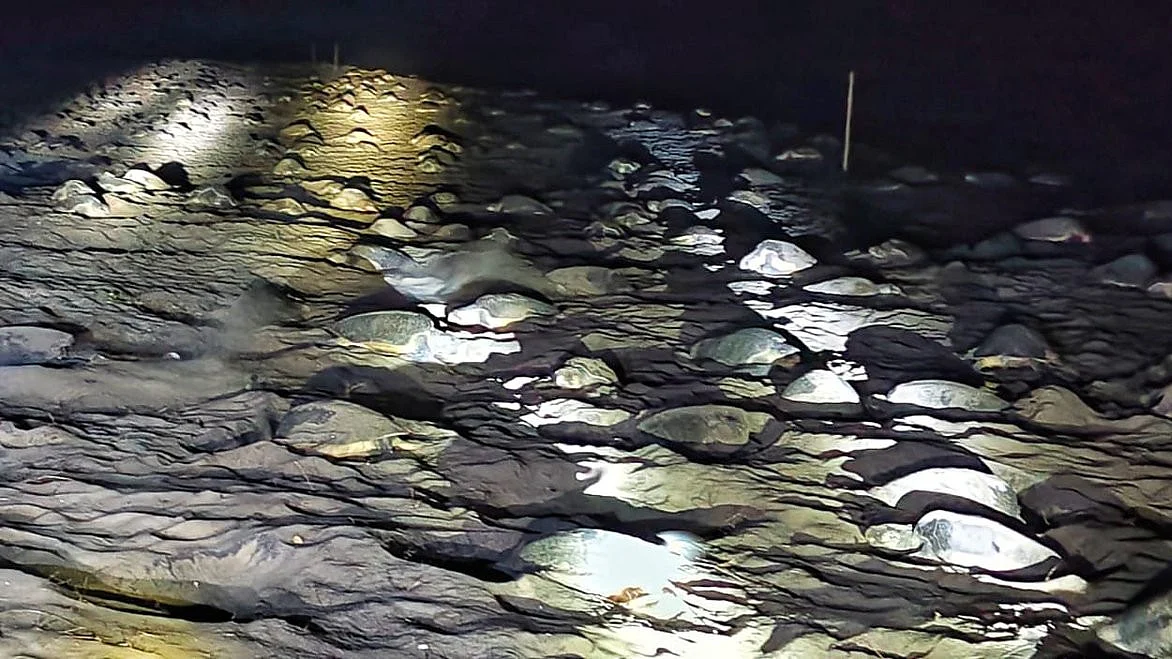Olive Ridley turtle arribada at Gahirmatha, Odisha, as mass nesting begins
In just one night, the beach received over 78,000 animals here to lay their eggs in the sand in the world's largest such rookery

The mass nesting of Olive Ridley turtles has commenced at Gahirmatha beach in Odisha's Kendrapara district, a senior forest official said on Thursday, 6 March.
Odisha's chief wildlife warden Prem Kumar Jha, in a post on X, said, "Olive Ridley arribada has commenced at Gahirmatha, the world's largest rookery, following a record-breaking 6.37 lakh mass nesting at Rushikulya."
'Arribada' is a Spanish-origin term for the mass nesting.
Jha said this is a significant milestone in Odisha's ongoing marine conservation efforts.
In another post, he said, "Gahirmatha witnessed the arrival of over 78,000 Olive Ridley turtles for mass nesting last night. As the world's largest rookery, it remains a critical site for their conservation. Odisha continues its dedicated efforts to protect these marine wonders."
An official of Rajnagar forest (mangrove) division said it was heartening to note that the turtles have arrived on their annual sojourn to lay eggs at the tranquil Nasi-II beach of Gahirmatha marine sanctuary.
The news came amid environmentalists expressing concern over the delay in the arrival of the turtles.
Experts suspected that climatic conditions might have caused the delay. The Olive Ridley turtles usually come to Gahirmatha by end of February, but this year, they were delayed by a week.
The mass nesting, which commenced on Wednesday night, 5 March, is expected to continue for at least one week.
The perfect topography and profile of the beach, free from sea erosion, has proved to be conducive for the turtles to lay eggs, the official said.
Nasi-II beach comes under the jurisdiction of the Defence Research and Development Organisation (DRDO), which conducts missile tests from the neighbouring Wheeler Island.
Visitors are not allowed on the beach and only forest personnel are deployed there for patrolling.
The forest personnel deployed there were the only witnesses to the rare phenomenon. No wildlife researcher could reach the spot due to prohibitions in place, the official said.
"The presence of the forest personnel on the nesting ground did not bother the turtles as they maintained a distance from the turtles," he added.
Female turtles arrive at the beach usually at the dead of the night to lay eggs. After laying eggs, they return to the sea. The hatchlings emerge from the eggs after 45–50 days. It is a rare natural phenomenon where the babies grow without their mother, the official added.
An Olive Ridley turtle usually lays about 120–150 eggs. But not all eggs remain intact, as predators devour some. Besides, some eggs are also washed away by sea waves during high tide.
Follow us on: Facebook, Twitter, Google News, Instagram
Join our official telegram channel (@nationalherald) and stay updated with the latest headlines
